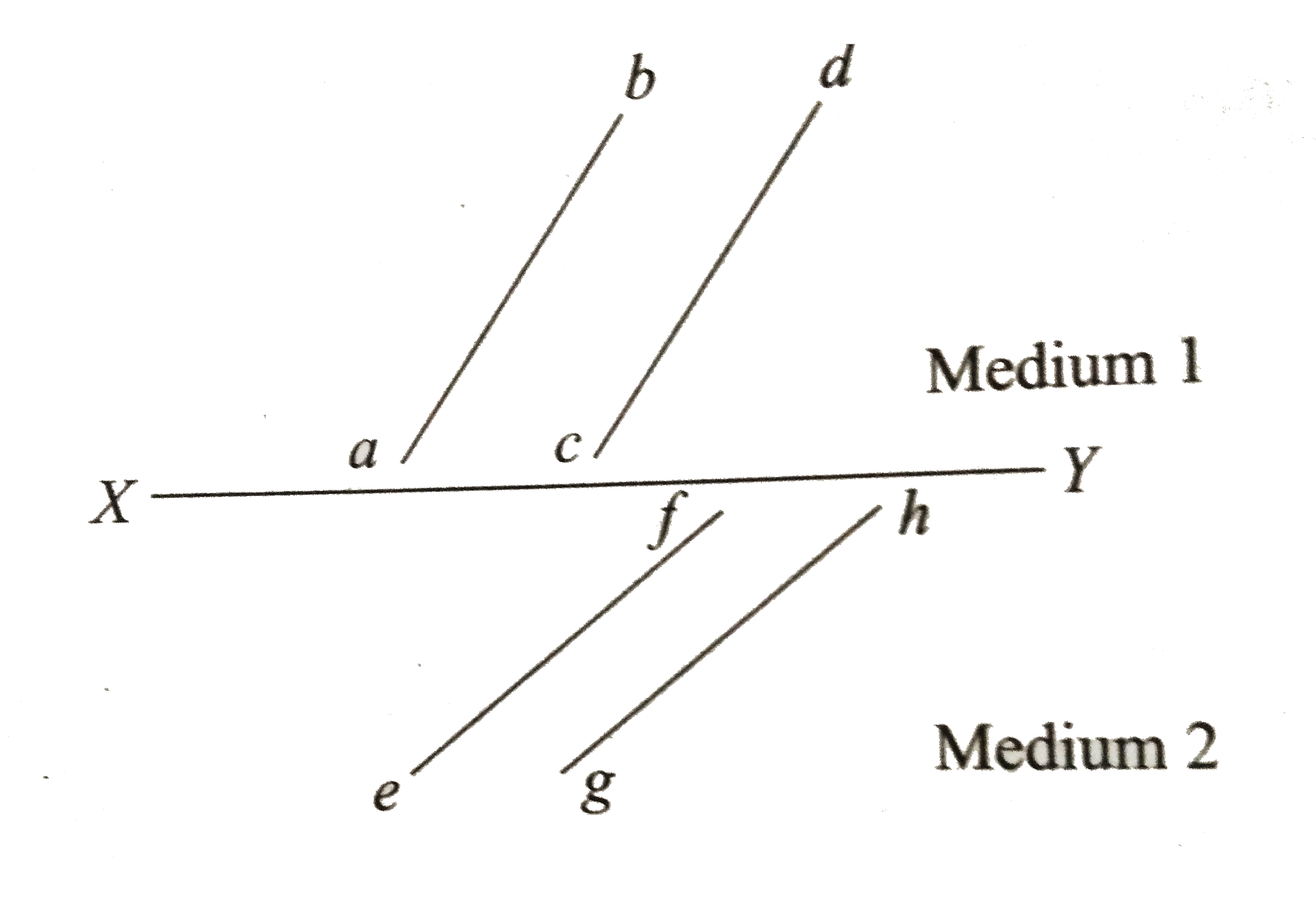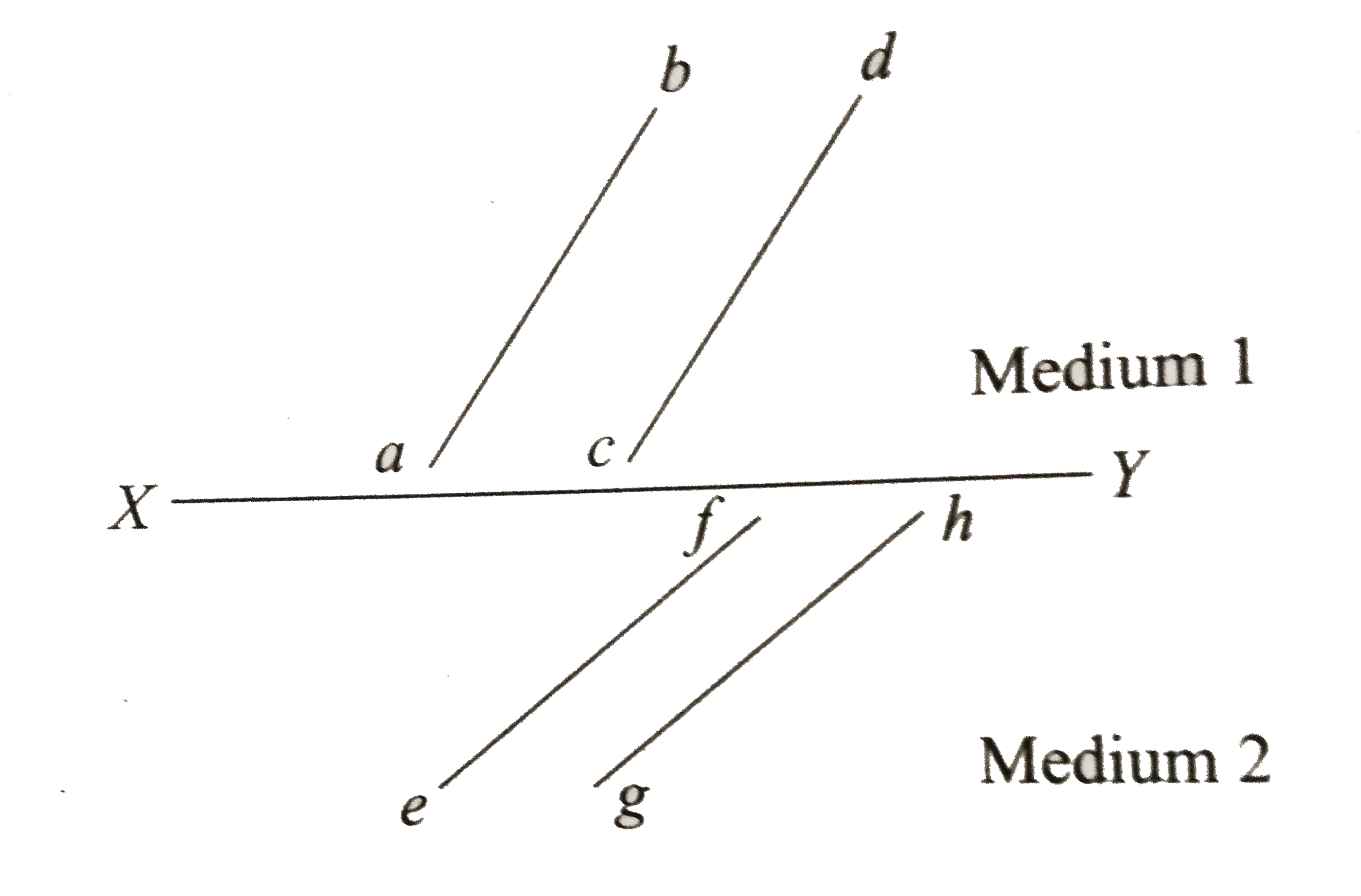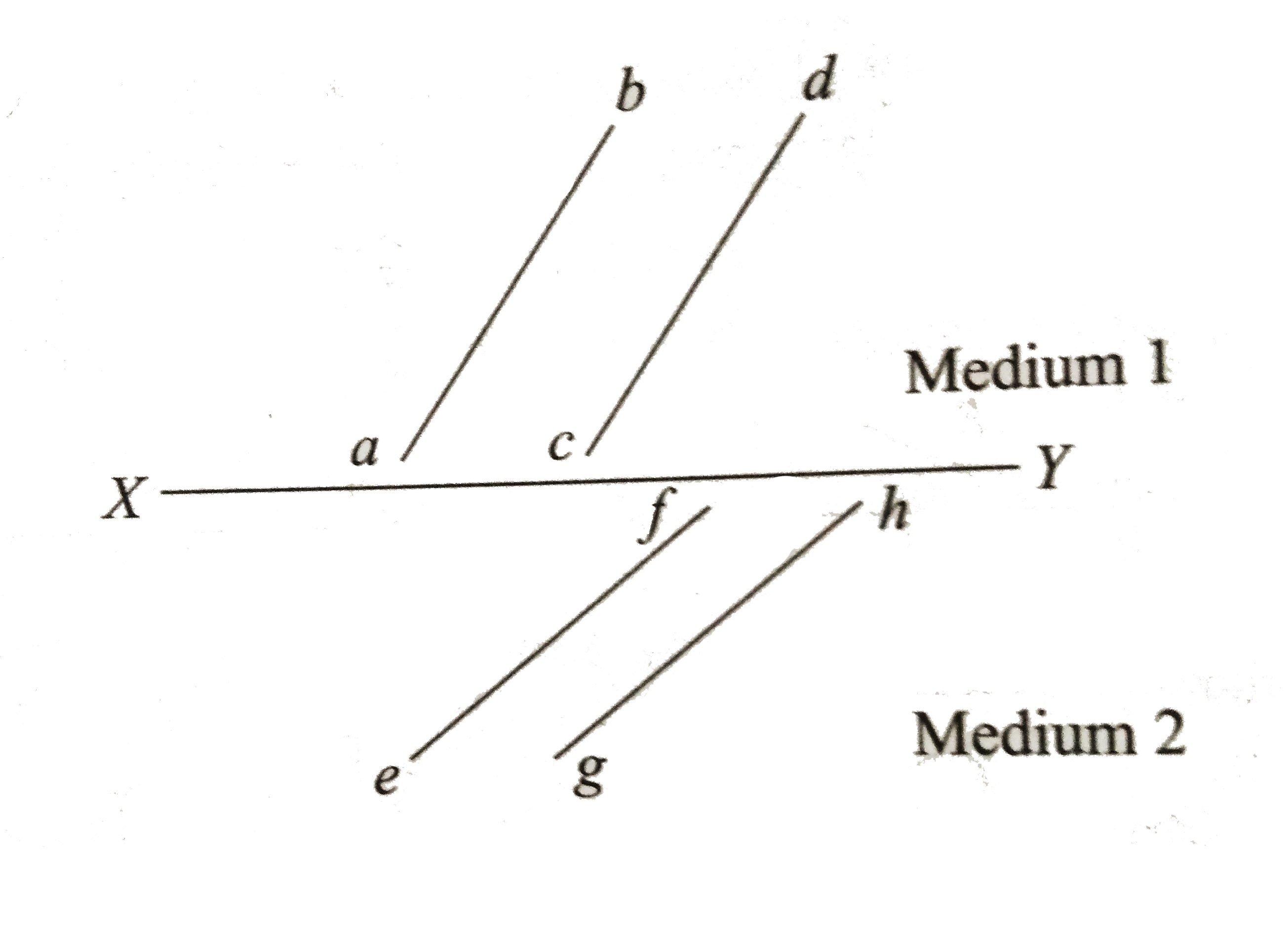Complete Solutions to Linked Comprehension type of chapter WAVE OPTICS of Class 12 book with complete answers and questions
| Class 12 | PHYSICS |
| Chapter | WAVE OPTICS |
| CENGAGE PHYSICS | Linked Comprehension type |
| Number Of Questions | 5 |
| Academic Year | 2023-24 |
Fig. shows a surface XY separating two transparent media, medium 1 and medium 2. Lines ab and cd represent wavefronts of a light wave travelling in medium 1 and incident on XY. Line ef and gh represent wavefront of the light wave in medium 2 after rafraciton.

Light travel as a
View SolutionFig. shows a surface XY separating two transparent media, medium 1 and medium 2. Lines ab and cd represent wavefronts of a light wave travelling in medium 1 and incident on XY. Line ef and gh represent wavefront of the light wave in medium 2 after rafraciton.

The phase of the ligth wave at c, d, e, and f are `phi_(c)`, phi_(d), `phi_(e)` and `phi_(f)`, respectively. It is given that `phi_(c ) != phi_(f)`. Then
View SolutionFig. shows a surface XY separating two transparent media, medium 1 and medium 2. Lines ab and cd represent wavefronts of a light wave travelling in medium 1 and incident on XY. Line ef and gh represent wavefront of the light wave in medium 2 after rafraciton. Speed of light is

View SolutionMost materials have the refractive index, `n gt 1`. So, when a light ray from air enters a naturally occuring material, then by Snell's law, `(sin theta_(1))/(sin theta_(2)) = (n_(1))/(n_(2))`, it is understood that the refracted ray bends towards the normal. But it never emerges on the same side of the normal as the incident ray. According to electromagnetism, the refractive index of the medium is given by the relation, `n = (c // v) = +- sqrt(epsilon_(r ), mu_(r ))`, where `c` is the speed of the electromagnetic waves in vacuum, `v` its speed in the medium, `epsilon_( r)` and `mu_( r)` are negative, one must choose the negative root of `n`. Such negative refractive index materials can now be artifically prepared and are called meta-materials. They exhibit significantly different optical behaviour, without violating any physical laws. Since `n` is negative, it results in a change in the direction of propagation of the refracted light. However, similar to normal materials, the frequency of light remains unchanged upon refraction even in meta-materials.
Answer the following questions :
Choose the correct statement.
View SolutionMost materials have the refractive index, `n gt 1`. So, when a light ray from air enters a naturally occuring material, then by Snell's law, `(sin theta_(1))/(sin theta_(2)) = (n_(1))/(n_(2))`, it is understood that the refracted ray bends towards the normal. But it never emerges on the same side of the normal as the incident ray. According to electromagnetism, the refractive index of the medium is given by the relation, `n = (c // v) = +- sqrt(epsilon_(r ), mu_(r ))`, where `c` is the speed of the electromagnetic waves in vacuum, `v` its speed in the medium, `epsilon_( r)` and `mu_( r)` are negative, one must choose the negative root of `n`. Such negative refractive index materials can now be artifically prepared and are called meta-materials. They exhibit significantly different optical behaviour, without violating any physical laws. Since `n` is negative, it results in a change in the direction of propagation of the refracted light. However, similar to normal materials, the frequency of light remains unchanged upon refraction even in meta-materials.
Answer the following questions :
For light incident from air on a meta-material, the appropriate ray diagram is
View Solution
Linked Comprehension type questions and complete solutions for chapter WAVE OPTICS of CENGAGE PHYSICS (ENGLISH) of Class 12